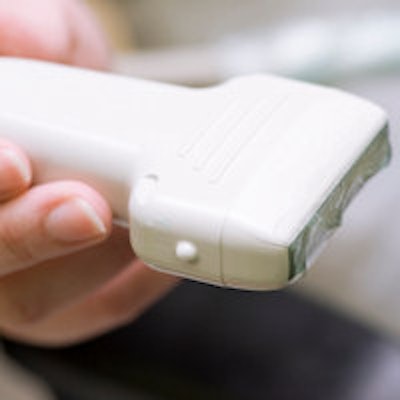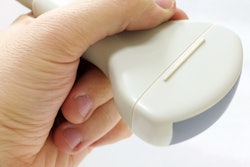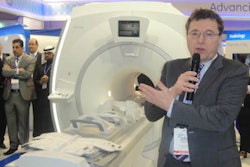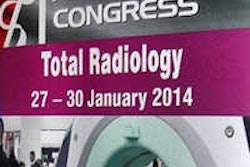
The role of point-of-care ultrasound in developing countries, the need for early ultrasound education, and the expansion of point-of-care cardiac ultrasound are among the featured topics in the latest issue of the World Heart Federation's Global Heart journal.
In an editorial discussing the potential role of point-of-care ultrasound in low- and middle-income countries, Global Heart Editor-in-Chief Dr. Jagat Narula, PhD, and associate professor Dr. Bret Nelson, both from Mount Sinai School of Medicine, point out that ultrasound's capital costs are generally lower than x-ray or CT, and ongoing upkeep expenses are low as well.
"Increasingly, ultrasound is being used in areas without easy access to imaging of any kind," they wrote (Global Heart, December 2013, Vol. 8:4, pp. 287-288).
Ultrasound's benefits
Mounting evidence also suggests that ultrasound can reduce complications, assist in emergency procedures, and improve diagnostic accuracy over the traditional stethoscope, the authors noted.
"It is expected that not only would medical care personnel use ultrasound technology in the remote areas of resource-limited nations, but also that the expanding communication/transmission prowess would open novel opportunities for telemedicine in these parts of the world," they wrote.
While many have argued that ultrasound has become the stethoscope of the 21st century, not every clinician has one in his or her coat pocket, of course. The scanners remain expensive, and point-of-care ultrasound is still a new field, according to Narula and Nelson.
Furthermore, many older clinicians completed training long before ultrasound was standard practice for their specialty, while "others have yet to bridge the philosophical and practical gap between comprehensive imaging by a consultant and bedside physical examination," they wrote.
For many clinicians, however, point-of-care ultrasound can exist between those two areas, according to the authors.
"It can be a rapid, bedside diagnostic test replete with archived images and videos and appropriate interpretation in a medical record, or it can be used as an ophthalmoscope (or stethoscope), allowing clinicians to visualize structures without a permanent record of what was visualized," they wrote. "As many specialties codify guidelines on how point-of-care ultrasound should be incorporated into clinical practice, some common training, interpretation, and documentation standards should emerge."
Early ultrasound education
Ultrasound should be included in medical education programs as early as possible to realize the full benefits of the technology, according to a review article in the same issue by Dr. J. Christian Fox, a professor of clinical emergency medicine and director of instructional ultrasound at the University of California, Irvine School of Medicine, and colleagues (pp. 289-292).
"Emergency physicians, intensivists, and other acute care clinicians are using and relying on critical care ultrasound imaging to better triage and diagnose patients at the point of care," they wrote. "As this new frontier of medicine continues to forge forward using this new and improving technology, we strongly believe in integrating ultrasound training earlier into the medical education curriculum."
Studies have shown that early training in ultrasound has enabled physicians to develop diagnostic skills that "far exceed the traditional examination that physicians have been taught for centuries," Fox and colleagues wrote.
"Thus, it's impossible to ignore the impact ultrasound has made within medical education," they concluded. "Ultrasound has played an essential role in point-of-care cardiac diagnostics, and implementing ultrasound training into medical education is the next logical step to enable the progression of point-of-care ultrasonography."
Point-of-care cardiac ultrasound
In another article in the issue, Nelson and Dr. Amy Sanghvi of Mount Sinai discuss the rise of point-of-care cardiac ultrasound in general hospitals, clinics, and prehospital environments (pp. 293-297).
"The pervasive use of focused ultrasound is perhaps most evident in the advent of ultrasound training in undergraduate medical curricula," they wrote.
In its first few decades, medical ultrasound was largely the domain of radiology, cardiology, and obstetrics departments. The combination of the development of less expensive, portable devices and the demonstration by other specialties of the value of qualitative point-of-care assessments has led to an explosion of specialties using ultrasound, according to the authors.
"Focused cardiac ultrasound, performed in real-time by treating clinicians, has the advantage of being inexpensive, repeatable, and intimately tied into the overall clinical picture of the patient," they wrote. "It is very often employed as part of a multiorgan system assessment and guided by discrete clinical questions related to the presence of tamponade and likelihood of fluid overload, for example."
Nelson and Sanghvi noted, however, that the need for comprehensive sonographic assessments by specialist consultants isn't likely to wane with the proliferation of point-of-care ultrasound.
"As our healthcare system becomes increasingly interested in cost-effective and evidence-based care, we are likely to see clinician-performed focused examinations complemented by comprehensive specialist studies with clear clinical indications," they wrote.



















